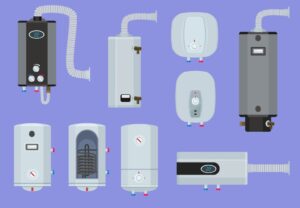How Does My Air Conditioner Work?
If you’re like other homeowners in Knoxville, Tennessee, you’ve probably wondered how your air conditioner keeps your home cool and comfortable. While your air conditioner is certainly a complex piece of machinery, how it functions is actually a lot simpler than you might imagine.
After understanding a little bit about the different components of your air conditioning system and how they work, you should have a better understanding of how your AC system keeps your house cool. Here is the step-by-step process of how an air conditioner works to make sure that your house always stays at the desired temperature.
Your AC Components
Before going in-depth about how an air conditioner works, it’s important to take a look at some of the components of your air conditioning system. Many people don’t realize that an air conditioning system includes a large number of parts, all of which are vital for controlling the temperature level in a home.
All air conditioning systems have a thermostat that is responsible for turning the components on and off. Your system will also have an outdoor unit that houses the compressor, condenser coil, and fan, as well as an indoor unit that holds the evaporator coil.
All AC systems come with copper tubing that allows the flow of refrigerant between outdoor and indoor units, and there is also an expansion valve that controls how much refrigerant flows into the evaporator coils. The final component of your system is the ductwork that circulates the air in your home. The ductwork consists of the ducts themselves, the air vents, return vents, and a filter that cleans the air.
What Happens Indoors
Now that we’ve identified the different parts of your system, let’s examine how they all work together to keep your house cool, starting with the indoor components. The first step of the cooling cycle happens when your thermostat detects that the temperature in your home is too high and activates your air conditioner. The fan in the indoor unit will then turn on to pull hot air in your home through your return vents into your ductwork.
The warm air first passes through your filter, removing dust and other contaminants, and is then blown over the evaporator coil. Inside the evaporator, the refrigerant transitions from liquid to gas. As this process occurs, the heat energy is absorbed by the refrigerant and removed from the air passing over the coil, turning it into cool air. After the air has been cooled, the indoor air blower moves the air through your ductwork and disperses it throughout your home.
What Happens Outdoors
What happens inside of your house is only one half of the cooling process. The outdoor unit also plays a very important role, and without your outdoor components, your air conditioning system would not be able to effectively cool your home.
After the refrigerant has turned to gas and absorbed the heat from the air in your home, it will then pass from the evaporator coil through copper tubing and on to the compressor outside of your home. The compressor is basically an electric pump that pressurizes the refrigerant.
Once the refrigerant has been pressurized, it moves from the compressor into the condenser coil. When the refrigerant is in the condenser coil, the fan in the outdoor unit draws air through the coil, which absorbs the heat energy from the refrigerant and then releases it outside of your house. While the heat energy is being absorbed by the air passing through the coil, the refrigerant changes from a gas back into a liquid.
The refrigerant then moves through a copper tube and through the expansion valve back into the evaporator coil, starting the cooling process over again. This cycle will continue until the thermostat detects that the temperature in your home is at its desired level and turns off both the indoor and outdoor units.
Understanding how your air conditioning system works means knowing when something is wrong and needs a repair. When it’s time to service your system, you can call us at Cook’s Comfort Systems, Inc. at 865-238-4835. Our techs can quickly detect and repair any issue with your system so that your home is always as cool and comfortable as you want.
Image provided by Shutterstock
You May Also Like

4 IAQ Pollutants in Your Loudon, TN Home
Americans today are spending more time inside their homes, and that’s especially true when outdoor temperatures drop during the winter. With all… Continue Reading 4 IAQ Pollutants in Your Loudon, TN Home…

Don’t Get Your Furnace From a Big Box Retailer in Knoxville, TN
If you need a new furnace this winter, you may feel inclined to head over to your nearest retailer in Knoxville, TN… Continue Reading Don’t Get Your Furnace From a Big Box Retailer in Knoxville, TN…

5 Reasons to Avoid Repairing Your Own Knoxville, TN Furnace
Some furnace repairs seem rather simple, and it’s tempting to want to save on labor costs and do it yourself. However, furnace… Continue Reading 5 Reasons to Avoid Repairing Your Own Knoxville, TN Furnace…
